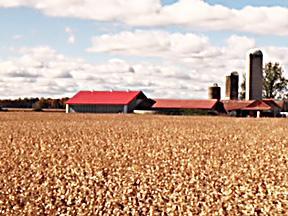
Photo from Beth Darnell
Scenes from a trip to upstate New York
We had seen pictures of the Hudson River Valley in full orange, yellow and red foliage in October. Now on Amtrak from New York City, all the trees were still green. How nice it would have been to have seen our U. S. Military Academy, high up on a bluff, surrounded by blazing colors - but not this year.
Beth and I had visited the Academy many years previous. It’s so full of history. Once a fort guarding the Hudson, it was almost betrayed into the hands of the British in the Revolutionary War by the traitor Benedict Arnold. We visited the old chapel (most tourists never find this) and saw the names of George Washington’s generals, like Nathanial Green, carved on a wooden wall. Benedict Arnold’s name is scratched out. A fitting tribute to the traitor.
We also passed Hyde Park, N.Y., home town of Franklin Delano Roosevelt and his domineering mother. His house there is a National Historical Site.
People kept encouraging us with reports of beautiful foliage above Albany, N.Y. in the Adirondack Mountains. It was true, the farther up the tracks toward Montreal, Canada the more beautiful the scenery became. The foliage was at peak splendor. We traveled in the dome car, which gave us a bird’s eye view of the awesome surroundings.
Several green meadows, surrounded by corn fields and colorful woods, had big N.Y. whitetail deer and Eastern wild turkeys feeding on the edges.
As we neared the marshy end of historic Lake Champlain we began to see waterfowl – primarily Canada geese and mallard ducks. The mallard drakes were in full color displaying their bright green heads. We also saw several groups of black ducks. We get no black ducks on the Central Flyway. All the waterfowl that we observed will soon travel south down the Eastern Flyway. While watching the waterfowl, we also saw two bald eagles. One was immature brown in color; the other one had a shaggy white head.
Although we saw considerable numbers of ducks and geese, it didn’t compare to what I saw in the prairie potholes of Saskatchewan when I hunted there in September 2017. The prairie pothole landscapes of Saskatchewan, and Alberta prairies, plus North and South Dakota, and Eastern Montana is the “duck factory” of North America. These birds are the ones that come down our Central Flyway.
Lake Champlain, which we traveled the shore for many miles is, huge. It connects to the St. Lawrence River, making it possible to travel by boat all the way into the Atlantic Ocean.
We stopped at Fort Ticonderoga, the historic fort of Revolutionary War days. It was built by the French in the 18th century. It was of strategic importance during the Seven Year War (French Indian War) in the struggle between Great Britain and France.
In our Revolutionary War Fort Ticonderoga was captured in a surprise attack led by Ethan Allen and Benedict Arnold. Though an unbelievable, heroic trek through the wilderness, the huge cannons from the fort were dragged to Boston and placed by General Washington on the heights around the city. These guns caused the British to evacuate the city in March 1776. The seize was lifted due to the Ticonderoga cannons.
As we traveled many miles along Lake Champlain the Green Mountains of Vermont could be seen in the distance across the lake.
Montreal was a disappointment to me. It’s just a big city. I don’t like to tour buildings, old or new. Old Catholic churches and basilicas bore me. And I’m not interested in modern art museums.
The biggest event during our stay there was the first day of legalized recreational marijuana. People were in line at designated drug stores before 4 AM. The lines of people were so long that we could not see the end. Obviously, lots of Canadians love pot.
The trip back to N.Y. City, was perfect – lots of sunshine to accent the colors. The agriculture of southern Quebec Prairie and upstate New York was astonishing. Hundreds and hundreds (maybe thousands) of acres of corn and soybeans, enclosed tall silos, huge barns and farm houses dominated the landscape. Most of the corn had not yet been harvested. The corn-picking machines were just getting started.
In upstate N. Y. we saw many apple orchards. Thousands if apples lay on the ground under the trees. It seemed like a waste.
Out train crossed Northern Ohio and Indiana on our journey to Chicago. Again, we marveled at the huge farms. I watched closely for pheasants along the edges of the cornfields but never saw one. I guess we will have to travel west next fall to see pheasants.











